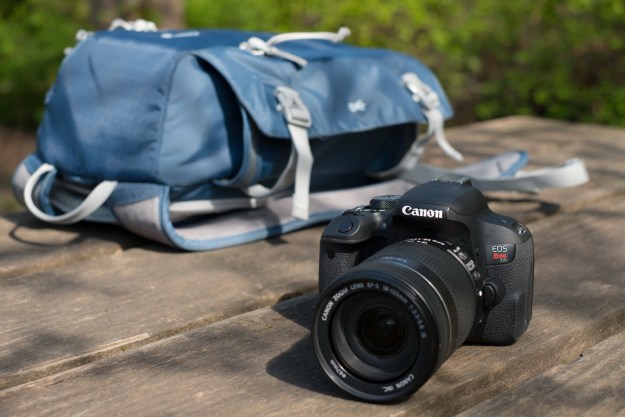There are several noteworthy improvements in Nikon’s new D5300 APS-C (DX) DSLR from its predecessor, the D5200. One of Nikon’s best-selling and most popular models, the midrange 24.1-megapixel D5300’s smaller and lighter body has improved ergonomics – there’s more surface area on the grip for a tighter hold and more clearance between your fingers and the lens. Despite the body being smaller, the vari-angle flip-out LCD got bigger (3.2 inches from 3 inches in the D5200). With the Expeed 4 image processor the ISO range has increased (100-12,800). But the big addition is that Wi-Fi is now built into the camera – a first for Nikon DSLRs.
Another big change, Nikon has removed the optical low pass (anti-aliasing) filter from the 24.2-megapixel CMOS sensor, to improve the image quality of stills and videos – a trend that’s happening with many new cameras. The D5300 has the same 39-point autofocus system and 5 frames-per-second continuous shooting as the D5200. There’s also Nikon’s Scene Reconigtion System that uses the 2,016-pixel RGB metering system to automatically select exposure, AF, and white balance based on the scene conditions.
Wi-Fi has been available in Nikon cameras via an optional adapter, but the D5300 will be the first to have it built in. It’s also the first Nikon DSLR to have onboard GPS, which lets you geotag your images before you upload or e-mail them from the camera via a connected smartphone or tablet. You can also use a connected smart device as an external monitor for remote shooting.
For video capture, Nikon has added Full HD 1080p at 60p. There are nine special effects you can use to edit in-camera, including a “HDR painting” feature that lets you alter the colors of an image to make it look as if it was shot as a high-dynamic range photo.
The D5300 is on sale now for $1,400, which comes with the AF-S Nikkor 18-140mm f/3.5-5.6G ED VR kit lens; if you’re stepping up and you already have a set of Nikkor DX lenses, you can pick up just the body for $800. The camera comes in three colors: black, red, and a new gray option.
AF-S Nikkor 58mm f/1.4G lens

This premium lens will go on sale later this month for $1,700.


